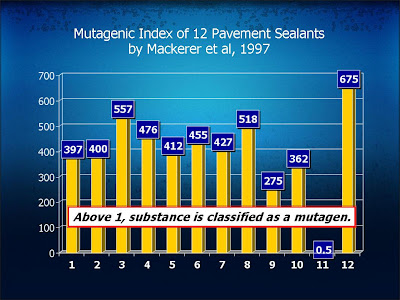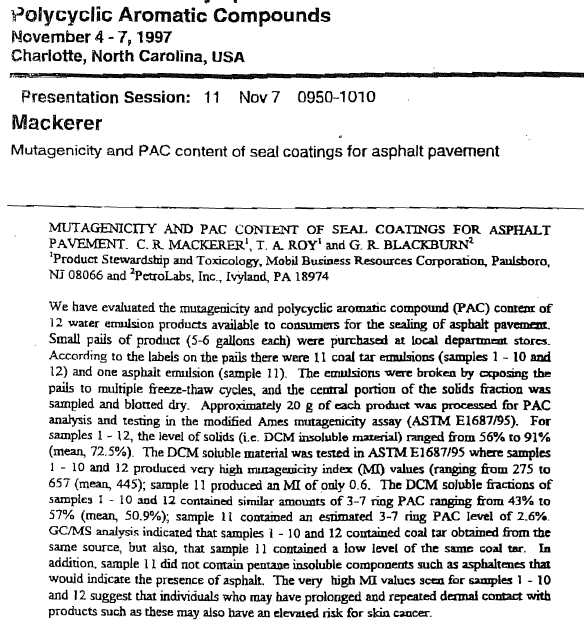We continue to hear some say that coal tar sealants have the toxic ingredients refined out (generally polycyclic aromatic hydrocarbons, PAH). This in spite of the laboratory levels of showing extremely high concentrations.
A few years ago, I came across this research that got little attention when presented back in 1997. It pre-dates any of the current understanding of the problem of coal tar sealants. The lead author is the retired head of the Mobil Corporation’s research laboratory. He developed an index to rate the mutagenicity* of chemical solutions called the Ames Index. It has been used with other paving products as well.
Dr. Mackerer decided to do this study after seeing some college kids sealing his neighborhood driveways. He wondered just how toxic the sealants are. So he went to a hardware store and bought 12 separate products. As the above graph shows, anything above 1.0 is considered a mutagen*. The coal tar sealants are an average of about 450! Dr. Mackerer said that while the absolute number can go higher, after a few hundred the real toxicity is maxed out .
While the technique used in this study may have concentrated the toxicity by breaking the emulsion, the mixture would be high on the toxic index nonetheless. It would be great to have the resources to perform this analysis on dry sealant dust or raw product as it comes out of the bucket. Maybe someone would be willing to sponsor this?
*The definition of a mutagen is: An agent, such as a chemical, ultraviolet light, or a radioactive element, that can induce or increase the frequency of mutation in an organism.


